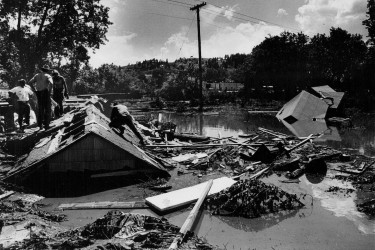Collection
Environment, Housing, & American Indians in the 1970s
These three political issues of the early 1970s are most often studied in separately: the environmental movement as an offshoot of the '60s white middle-class counterculture, the continuing effects of residential segregation as evidence of the failure of the African American civil rights movement to solve economic inequalities, and American Indian resistance as a continuation of centuries long conflicts over sovereignty and land ownership. This collection centers around an article from Made By History about a 1972 flood in South Dakota, and six more articles about policy and activism, help us explore the many ways these issues are intertwined. The other articles in the collection explore other ways these themes shaped the early 1970s, and how they intersect in other eras, from the 1930s to the present.






